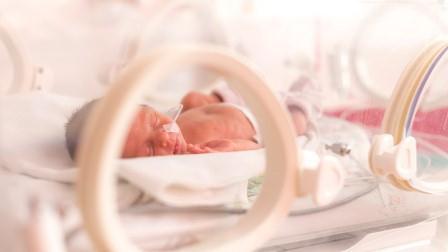
An analysis of extremely premature Australian babies who were tracked until their eighth birthday has concluded that the newer strategies to help preemies breathe easier while in a neonatal intensive care unit may have done more harm than good.
Survivors treated in 1997 were found to have better lung function at age 8 than those treated in 2005, the most recent year analyzed.
"It's an incredibly thought-provoking study," said Dr. Leif Nelin, chief of neonatology at Nationwide Children's Hospital in Columbus, Ohio, who was not involved in the research. "It's going to cause all of us to take a step back and think about what' we're doing."
At issue is the best way to use oxygen therapy, steroids, extra air pressure in a technique known as CPAP, and other treatments to help children with dangerously-underdeveloped lungs breathe better.
The findings "suggest that we should not rush to embrace newer, noninvasive approaches to respiratory support in the belief that less is always more," Drs. Michael Schreiber and Jeremy Marks of the University of Chicago write in an editorial in the New England Journal of Medicine, where the study appears.
The assessment looked at 546 infants born prior to 28 weeks gestation in Victoria, Australia, at three points in time.
A team led by Dr. Lex Doyle of the Royal Women's Hospital and the University of Melbourne found the rate of lung damage known as bronchopulmonary dysplasia was higher among the 8-year-olds treated in 2005 than those treated in the early 1990s and in 1997. Since 1991, steroid use to help the lungs mature has waxed and waned, and doctors have used a detergent-like drug called a surfactant to help keep immature lungs open and working properly.
"We would like to think everything gets better all the time, but that doesn't always translate," Doyle told Reuters Health in a telephone interview. "We find we're working harder and babies aren't any better when we test their lungs at age 8."
By age 8, the amount of air the children could exhale averaged 85.4 percent of its predicted value in the group born in 2005. It was 87.9 percent in the group born in 1991 and 1992 and 92.0 percent in the preemies born in 1997.
Lower lung capacity is a harbinger of problems later in life, said Doyle, because lung performance peaks when a person is in their 20s. "Then it's all downhill from there. Because these children are not getting to the peak, they may end up getting lung problems earlier than others when they get old."
"This will prompt neonatologists to wonder if they are over-treating their patients," Nelin said.
But how doctors may be overtreating remains a mystery.
One possibility is that, unlike past eras, the oxygen content of a baby's blood is continually monitored and "you wonder if that's causing us to perhaps use oxygen more," Nelin said. "In the past, you might have a baby who looked pink and good and didn't have a monitor on, so you would say the baby's fine. Now you have the same baby with a monitor that says its oxygen saturation is borderline so you might be quicker to put on oxygen or go to respiratory support (when it might not be necessary),” he explained.
"It's not clear what needs to change, but some things need to be examined," he said.
Doyle said his study "is not going to change practice and shouldn't change practice. It should lead to people say, 'Can we observe something similar in our part of the world.' We may prove not to be correct. The study needs to be duplicated. It shouldn't change practice because we don't know which bit of practice might be better and what might be worse."
The study also shows the importance of investing in testing new treatments to make sure they are really as beneficial as doctors believe.
"It's really the whole basis for quality control," Doyle said. "You can't assume that they're better. You have to check. The consequences can be lifelong so you really have to make sure what you're doing is correct."
Source: Reuters
http://www.reuters.com/article/us-health-preemies-respiration-support-idUSKBN1AB2VO
 FR
FR EN
EN AR
AR








